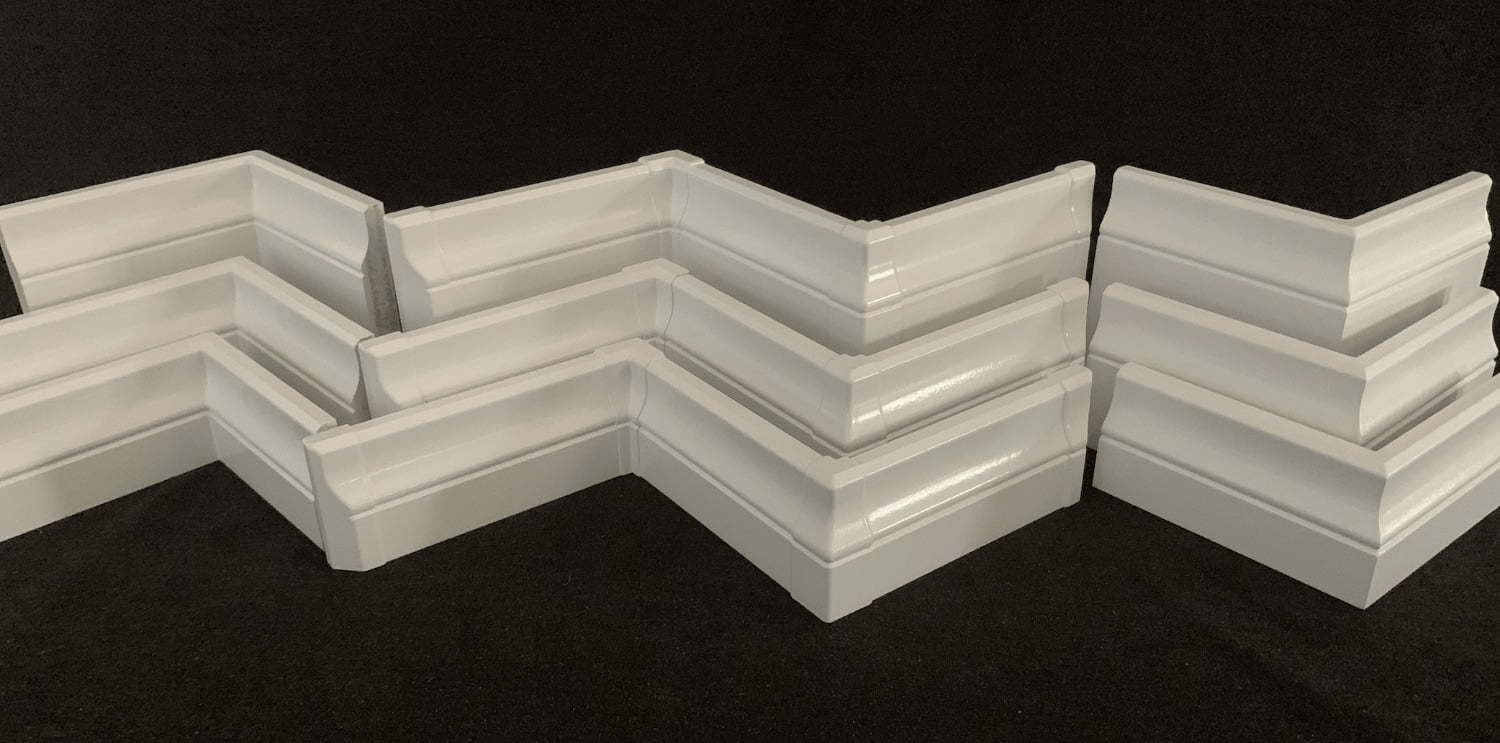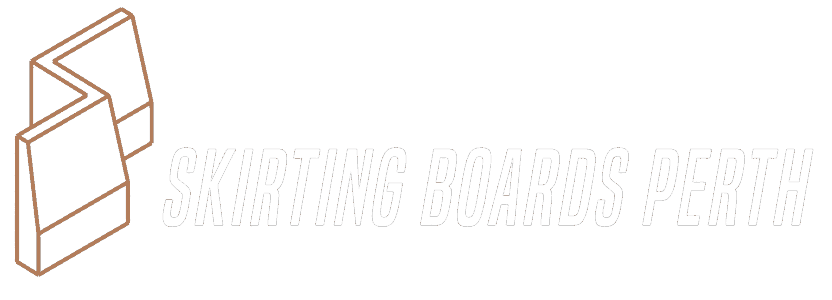What are Skirting Boards?
Skirting Boards
What is the Purpose of Skirting Boards?
Most homes have skirting boards running throughout their bedrooms, living rooms and hallways, but why is it so popular? Many couples and families are yet to install skirting boards and upgrade their homes, so they can add protection and decoration to their unprotected walls and plain floors. So, if you are new to the idea of skirting boards, this is a great step towards understanding this stylish and affordable feature to add to your interior.
WHAT IS A SKIRTING BOARD?
A skirting board, or well known as baseboards throughout the us, are timber or medium density fibreboards, crafted into mouldings to create custom decorative boards that are nailed and glued to the bottom of a wall and sit on the floor. These profiles come in a range of heights, sizes and thicknesses that are pre-primed and sanded before being painted or stained in a beautiful colour.

Lambs Tongue skirting boards with and without Octopus corner protections. View our corner protection page to explore another protective and unique feature to add to your home.
WHY WE USE SKIRTING BOARDS?
Skirting boards have several purposes, and depending on your profile choice, some can have larger effects of particular components. Timber and MDF skirting boards are simple and affordable features during renovation or new build, yet still have great impacts and increase of value in your home. Here are a few reasons why we use skirting boards and maybe why you should consider installing an intricate moulding in your kitchen, bedroom or hallways.
PROVIDES PROTECTION
Although skirting boards are praised for their decorative ideal, they give protection to your lower walls from accidental knocks and scuffs from mopping, vacuums and children’s toys, as well as protect your floors and walls from daily wear and tear from furniture and general household traffic.
GAP CONCEALER
Timber flooring and other floors leave gaps between the floor board and walls, so by installing skirting boards, it will conceal that gap while still allowing for expansion and contraction of the boards as temperature and humidity changes.
DECORATIVE FEATURE
While skirting boards serves their aim to protect your walls, they can be used to add a decorative and sophisticated feature to your home. They can frame and finish off any place, and when painted or stained certain colours and shades, it can really add a wonderful contrast between your flooring and wall and stylish texture.
Questions
Frequently Asked Questions
What are architraves and skirtings?
Skirting boards help protect your lower walls from scuffs and damages, on the other hand architraves have an effective purpose of hiding gaps between wall linings, door jambs as well as window frames.
Should skirting boards and architraves match?
Skirting boards should generally match your architraves, however you don’t have to exactly match in terms of shape, style and design- you can easily experiment with different architraves and skirting designs.
Are MDF Skirting Boards any good?
MDF Skirting Boards are well-known for their reliability and affordability. Customers choose MDF skirting boards for their homes, especially since they are durable and do not warp or swell easily.
Is MDF waterproof?
No, MDF is not waterproof, however some primed MDF is Highly Moisture Resistant which is still not waterproof, but makes it well worth your investment.
What are skirting boards made from?
MDF skirting boards (Medium density fibreboards) are made out of wood fibres from leftover hardwoods and softwoods from furniture and construction projects that no longer need the materials.
How do I choose skirting boards?
When choosing your skirting boards, you have to consider the height of your ceilings, the general design of your home, who’s living in your home and other crucial factors. With a variety of skirting profiles to choose from you can experiment with modern and classic designs to see which skirting best suits your home. The general rule is that higher ceilings means higher skirting boards.
What sizes do skirting boards come in?
Skirting Boards come in a variety of sizes, however the depending on your profiles choice the sizes will vary. The main sizes from our popular collections range from 42mm, 67mm, 87mm, 92mm, 125mm and 140mm.
What is the best height for skirting boards?
The best height of your skirting boards depend on your ceilings and the width of your architraves. A general rule some people use is approximately 1/18 of the height of your room should be for skirting boards or around double the width of your door architraves.
Can you put skirting board on tiles?
If you have tiles throughout your home, skirting boards are a great way to create a dynamic and modern look. You can either match your skirting boards to the floor and walls or create a bold statement by creating a contrast with a decorative colour.
Are skirting boards expensive?
MDF architraves and skirting boards are the least expensive and provide an outstanding decorative and protective feature to your home.
What are the different types of skirting boards?
There are many different types of skirting board profiles that vary in height, design and material. You can choose from a variety of style, however the most popular MDF skirting boards include: Lambs Tongue, Half- Splayed, WA Federation, WA Colonial, Bullnose and many more profiles.
How do you paint skirting boards perfectly?
In order to have perfectly painted skirting boards, you have to properly prepare your boards and use the correct technique. Make sure you carefully sand and prepare your skirting boards to remove any uneven surfaces and blemishes, then using a spray-gun evenly paint your skirting boards- spray painting your skirting will prevent ugly brush strokes.
Should skirting boards be the same colour as walls?
Your skirtings board don’t have to be the same colour as your walls. Different colour tones will give you various effects for your home. For example, darker skirting boards will give your rooms a modern and contemporary feel, while lighter shades and colours will help make smaller rooms appear larger. If you are having trouble, try experiment with samples and looks at images for inspiration or even contact a professional.
Do you need to sand skirting boards before painting?
Yes, you need to sand your skirting boards before painting them. If you don’t properly prepare your skirting boards by delicately sanding the surface, you will have an uneven and flawed finish as well as cause issues with the durability of the paint.
How do you remove skirting boards?
In order to remove your old skirting board, you need to cut the gap filler on the top of the skirting boards with a stencil knife, which stops the paint from sticking to your skirting board. Then, using a hammer, carefully tap a chisel or larger screwdriver between the wall and skirting boards, ensuring you start from one side to the other and detach the skirting board as you go.
Why is my white paint turning yellow?
Skiting boards tend to turn yellow when painted with oil-based paint, which tends to be the reason why acrylic paint is becoming more popular amongst customers. In addition, the new advance in the acrylic paint formula has allowed it to become tougher than oil-based paints.
Why do rooms have skirting boards?
Skirting boards can installed in bedrooms, the living room, home theatre, hallways and all throughout your home. People install skirting boards for their unique decorative purpose as well as a way to protect their walls from scuffs, wear and tear from furniture as well as annoying damages from kid’s toys and mops.
